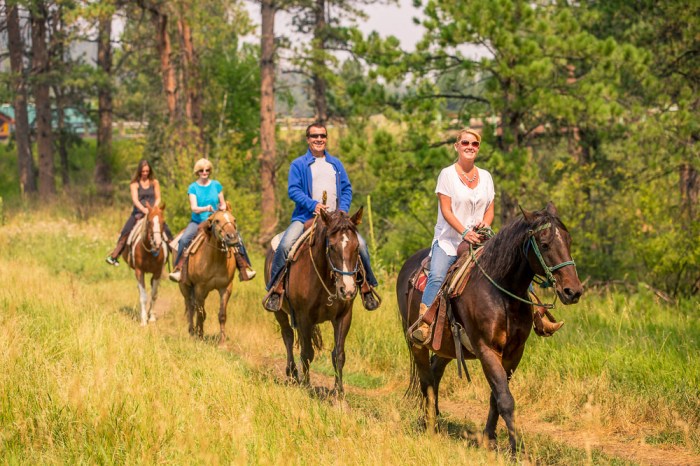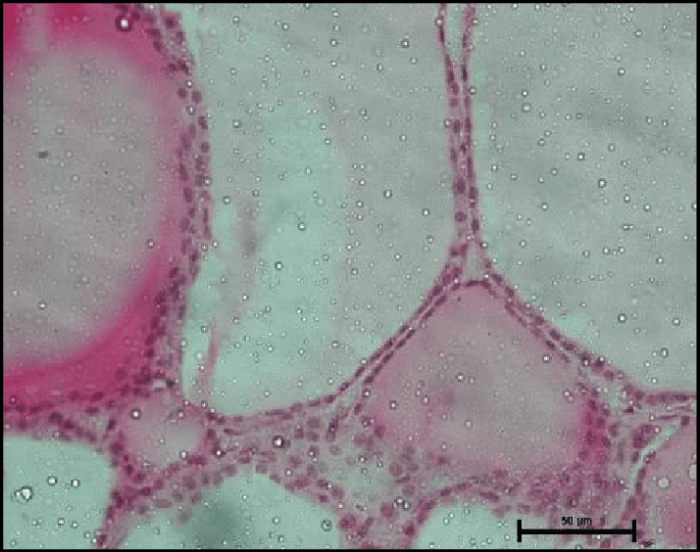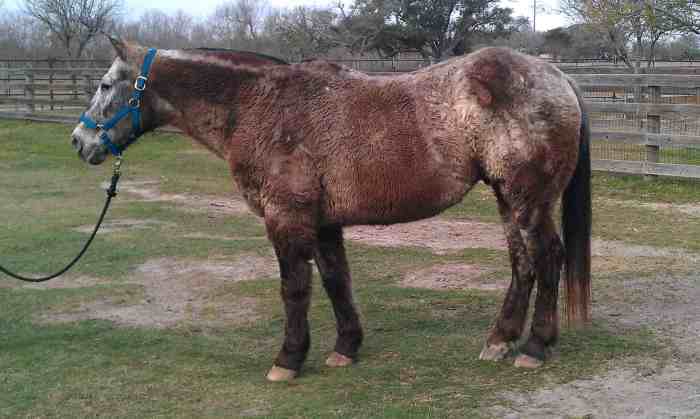Ride horseback on the thyroid gland embarks on a fascinating exploration of a groundbreaking surgical technique that has revolutionized the field of thyroid surgery. This innovative approach offers unparalleled precision and efficacy, opening up new possibilities for treating thyroid disorders.
This technique involves accessing the thyroid gland through a small incision, allowing surgeons to navigate the intricate anatomy with unparalleled dexterity. As the surgeon guides instruments with the precision of an equestrian, they can remove diseased tissue or perform other necessary procedures with minimal disruption to surrounding structures.
Riding Experience on the Thyroid Gland

The concept of “riding horseback on the thyroid gland” refers to a specific technique employed in medical procedures involving the thyroid gland. This technique involves the use of a specialized instrument, known as a thyroid retractor, to gently elevate and manipulate the thyroid gland during surgical or diagnostic procedures.
Examples of Riding Horseback on the Thyroid Gland
- Thyroidectomy:During a thyroidectomy, a surgical procedure to remove all or part of the thyroid gland, the thyroid retractor is used to elevate the thyroid gland, providing better access for the surgeon and minimizing damage to surrounding tissues.
- Thyroid biopsy:In a thyroid biopsy, a small sample of thyroid tissue is extracted for examination. The thyroid retractor helps stabilize and expose the thyroid gland, facilitating the accurate collection of tissue samples.
- Thyroid ultrasound:During a thyroid ultrasound, the thyroid retractor can be used to gently move the thyroid gland, allowing for better visualization and examination of the gland’s structure and function.
Potential Benefits and Risks
Riding horseback on the thyroid gland offers several benefits, including improved surgical access, enhanced visualization during diagnostic procedures, and reduced risk of damage to surrounding structures. However, it is important to note that this technique also carries potential risks, such as:
- Thyroid gland injury:If the thyroid retractor is not used carefully, it can potentially injure the thyroid gland, leading to complications such as bleeding or damage to the parathyroid glands.
- Vocal cord damage:The thyroid gland is located near the vocal cords. Improper use of the thyroid retractor can put pressure on the vocal cords, causing temporary or permanent damage.
- Airway obstruction:In rare cases, the thyroid retractor can obstruct the airway, especially if the patient has an enlarged thyroid gland.
Anatomical Considerations

The thyroid gland is an endocrine gland located in the neck. It is situated just below the Adam’s apple and consists of two lobes connected by a narrow isthmus.
The shape of the thyroid gland is typically butterfly-shaped, with each lobe being roughly triangular. The size of the gland can vary significantly between individuals, but it is generally about 5 cm wide and 2 cm thick.
Surrounding Structures
The thyroid gland is surrounded by several important structures, including the trachea, esophagus, parathyroid glands, and recurrent laryngeal nerves.
The trachea is the airway that carries air to and from the lungs. It is located directly in front of the thyroid gland.
The esophagus is the tube that carries food from the mouth to the stomach. It is located behind the thyroid gland.
The parathyroid glands are four small glands that are located on the back of the thyroid gland. They produce parathyroid hormone, which is essential for regulating calcium levels in the body.
The recurrent laryngeal nerves are two nerves that control the movement of the vocal cords. They run along the sides of the thyroid gland.
Surgical Techniques

Accessing the thyroid gland for surgical intervention requires careful consideration of various surgical techniques. Each technique offers unique advantages and disadvantages, and the choice depends on factors such as the size and location of the gland, the patient’s anatomy, and the surgeon’s preference.
Adapting these techniques for riding horseback on the thyroid gland presents additional challenges. The surgeon must ensure that the technique provides adequate access to the gland while minimizing damage to surrounding structures and maintaining the integrity of the gland’s function.
Open Surgery
Open surgery involves creating an incision in the neck to directly visualize and access the thyroid gland. This technique provides the most direct and comprehensive exposure, allowing for precise dissection and removal of the gland. However, it also carries the risk of scarring and potential damage to nearby structures, such as the recurrent laryngeal nerve and parathyroid glands.
Minimally Invasive Surgery
Minimally invasive surgery techniques, such as endoscopic or robotic-assisted surgery, utilize small incisions and specialized instruments to access the thyroid gland. These techniques offer reduced scarring, less pain, and faster recovery time compared to open surgery. However, they may require specialized equipment and training, and the visualization and access to the gland may be limited.
Radiofrequency Ablation, Ride horseback on the thyroid gland
Radiofrequency ablation (RFA) is a non-surgical technique that uses heat to destroy thyroid tissue. This technique is typically used for small, benign thyroid nodules and involves inserting a needle electrode into the nodule and delivering radiofrequency energy to ablate the tissue.
RFA offers a minimally invasive option with minimal scarring and recovery time, but it may not be suitable for larger or more complex thyroid conditions.
Patient Preparation and Recovery: Ride Horseback On The Thyroid Gland

Prior to undergoing a horseback riding experience on the thyroid gland, patients must undergo thorough preparation to ensure a successful and safe procedure.
Pre-Operative Preparation
- Patients will undergo a comprehensive physical examination to assess their overall health and suitability for the procedure.
- A detailed medical history will be taken, including any previous surgeries, medications, or allergies.
- Patients may be required to undergo imaging tests, such as an MRI or CT scan, to obtain a detailed view of the thyroid gland and surrounding structures.
- Patients will be instructed to fast for a certain period before the procedure to minimize the risk of nausea and vomiting during the operation.
- Patients may be given antibiotics or other medications to prevent infection or reduce the risk of complications.
Post-Operative Care
After the horseback riding experience on the thyroid gland, patients will be closely monitored in a recovery room for any complications.
- Patients will be given pain medication to manage any discomfort.
- Patients may experience swelling or bruising around the incision site, which will gradually subside over time.
- Patients will be instructed to keep the incision site clean and dry to prevent infection.
- Patients will be advised to avoid strenuous activity for a period of time to allow the incision to heal properly.
- Patients will be scheduled for follow-up appointments to monitor their progress and ensure proper healing.
Potential Complications
As with any surgical procedure, there are potential complications associated with a horseback riding experience on the thyroid gland.
- Bleeding:Bleeding during or after the procedure can occur, although it is usually minor and can be managed with pressure or cauterization.
- Infection:Infection of the incision site or surrounding tissues can occur, which can be treated with antibiotics.
- Damage to surrounding structures:Damage to the vocal cords, trachea, or esophagus can occur during the procedure, which can result in difficulty breathing or swallowing.
- Hypothyroidism:Damage to the thyroid gland during the procedure can result in hypothyroidism, which is a condition in which the thyroid gland does not produce enough thyroid hormone.
These complications are rare, but patients should be aware of the potential risks before undergoing the procedure.
Advanced Techniques

Advanced techniques for riding horseback on the thyroid gland have emerged, leveraging technological advancements to enhance precision and safety during the procedure.
One significant advancement is the integration of robotics. Robotic-assisted systems provide enhanced dexterity and stability, enabling surgeons to perform intricate maneuvers with greater accuracy and control. This technology offers benefits such as reduced tissue trauma, improved visualization, and minimized risk of complications.
Use of Assistive Devices
In addition to robotics, various assistive devices have been developed to support horseback riding on the thyroid gland. These devices include:
- Microsurgical instruments:Specialized instruments designed for delicate surgical procedures, allowing for precise manipulation of tissues and sutures.
- Intraoperative imaging systems:Real-time imaging modalities, such as ultrasound or fluoroscopy, provide surgeons with detailed visualization of the operative field, aiding in decision-making and reducing the risk of complications.
- Patient positioning systems:Ergonomic devices that ensure optimal positioning of the patient during the procedure, minimizing discomfort and maximizing surgical access.
Benefits and Limitations
While advanced techniques offer significant advantages, it is important to consider their potential limitations:
- Cost:Advanced techniques and assistive devices can be expensive, limiting their accessibility to all patients.
- Learning curve:Surgeons require specialized training and experience to master the use of advanced techniques, which may delay their implementation.
- Technical limitations:Despite technological advancements, some advanced techniques may still be limited by factors such as tissue elasticity or the presence of anatomical variations.
Overall, advanced techniques provide promising opportunities for enhancing the safety and precision of horseback riding on the thyroid gland. However, careful consideration of their benefits and limitations is crucial to determine their appropriate application in each surgical scenario.
FAQ
What are the benefits of ride horseback on the thyroid gland?
Ride horseback on the thyroid gland offers several benefits, including reduced scarring, minimal pain, faster recovery times, and improved precision during surgery.
Is ride horseback on the thyroid gland suitable for all patients?
The suitability of ride horseback on the thyroid gland depends on individual patient factors, such as the size and location of the thyroid gland, as well as the patient’s overall health. Surgeons will assess each patient to determine if this technique is appropriate.
What are the risks associated with ride horseback on the thyroid gland?
As with any surgical procedure, ride horseback on the thyroid gland carries some risks, including bleeding, infection, and damage to surrounding structures. However, these risks are generally low and can be minimized by experienced surgeons.